The British Army has showcased a new digital targeting system known as ASGARD, designed to dramatically improve the speed and accuracy of battlefield strikes.
Tested during recent NATO exercises in Estonia, ASGARD marks a significant shift in the Army’s lethality and digital transformation strategy, as outlined in the UK’s Strategic Defence Review.
The system uses AI and advanced communications networks to identify, track and strike enemy targets at long range. According to the Ministry of Defence, ASGARD enables decisions that once took hours to now be made in minutes, significantly improving the tempo of operations.
“We are learning the lessons from Ukraine so our frontline personnel can strike further and faster and maintain advantage over our adversaries,” said Defence Procurement Minister Maria Eagle MP. “ASGARD exemplifies the vision of the Strategic Defence Review, with speed and world-class capability.”
General Sir Roly Walker, Chief of the General Staff, called the system a breakthrough: “ASGARD helps double our lethality and exponentially reduces the time to see, decide, and strike. What took hours, now takes minutes.” He added that the system brings the UK closer to the high-speed targeting networks used by Ukraine against Russian forces
The Army’s plan is to create a full “Digital Targeting Web” across the Armed Forces by 2027, backed by over £1 billion in funding. ASGARD is the Army’s lead contribution, with further phases set to extend its reach at the corps and divisional levels.
Developed in close collaboration with industry through a rapid acquisition framework, ASGARD was announced by the Defence Secretary in October 2024. Contracts were issued in January 2025, and a prototype was deployed just four months later. The capability was successfully tested in NATO’s Exercise Hedgehog.
ASGARD’s rollout is part of a broader effort to integrate autonomy and AI into UK defence systems. According to the Army, it also aims to strengthen links with British industry, including small and medium enterprises, and to speed up defence procurement cycles through novel acquisition models.
The MOD has confirmed further funding to accelerate the programme’s next phase, with a focus on enhancing the system’s contribution to NATO operations and UK national defence.



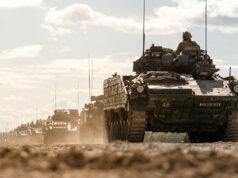
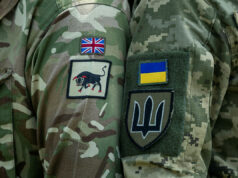
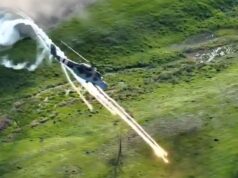

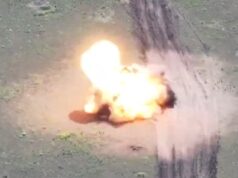

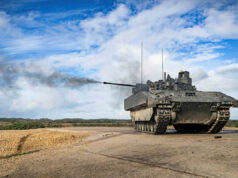
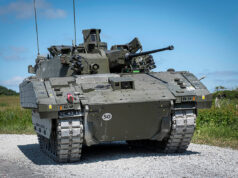



I guess that would make them ‘more lethal’, but only if it comes with larger munitions stores
Send it to Ukraine where integrated with their SAAB surveillance planes it could do serious damage to the Russians.
Well I would agree but I note ” He added that the system brings the UK closer to the high-speed targeting networks used by Ukraine against Russian forces…” which suggests as it’s been implemented so quickly (this is Britain after all) we learnt most of whatever form it takes from Ukraine and the intent is to eventually match what they successfully utilise, so not sure Ukraine would want a potential downgrade in capability. But yes there may be elements of it that could contribute to Ukraine’s capabilities and would hope and indeed expect cross fertilisation is taking place where appropriate. We can only hope anyway.
That assumes that we didn’t develop it with them in the first place.
We did manage to create Sea Viper and sea Ceptor which uses a CMS to create a threat picture -> table -> effector.
We have been doing a lot of spiral development using the free target drones and missiles that Mad Vlad sends free daily.
I think project Asguard sounds like part on important upgrade to how the Army could function strategically and for attacks at a distance. Speeding up the C2 and the OODA loop can only be a good thing.
However I’m having a hard time swallowing a tenfold increase in lethality. I wonder how lethality is being measured?
While the CGS has previously talked about a doubling of lethality by 2027 and a trebling by the end of the decade, yesterday’s government press release calls Project Asgard a “fundamental lethality shift” and comes with an even bolder claim. “Following the Strategic Defence Review, the Army will deliver a tenfold increase in lethality over the next ten years by harnessing firepower, surveillance technology, autonomy, digital connectivity, and data – leading the way in NATO in its use of technology to change how it fights, improving speed and accuracy. ASGARD will exploit AI and novel communications networks, providing rapid targeting and decision-support to personnel.” So tenfold by 2035.
If the Targeting Web can delivery such multiples, it suggests to me that they have previously expected the vast majority of the Army’s firepower to be wasted on the wrong targets or to miss its target altogether. Is that how others here read it? Does that sound right?
‘ASGARD helps double our lethality ‘ – not tenfold.
Read the MOD announcement. Try searching for the title: Fundamental lethality shift for British Army spearheaded by novel targeting tech ‘ASGARD’
Lethality is measured on the ability to acquire and affect targets.
The British army has long needed a force measurement metric that didn’t include the number of shoes worn by its members.
As a force measurement metric it’s an improvement but it still ignores the potential adversary.
“3x more lethal” is meaningless, “3x more lethal against ISIS” means something, “3x more lethal against Russia” means a lot.
The risk being the Treasury! If we are doubling or tripling lethality the Treasury could expect a reduction in force number by a corresponding amount! Sarc on !
I agree, but does pose the question when it’s been able to be introduced so quickly, why what is not fundamentally new technologically just clever application was not foreseen and recognise earlier. We know you can’t beat actual experience to inform true, but there is so much sophistication, certainly this past decade in predicting, determining what’s required and its likely performance in almost endless simulations, one has to ask was there a deficiency or perhaps a lack of serious focus in this area prior to Ukraine, that now allows such claims of impressive near instant efficiency improvements to be made?
I agree, low bar was set prior to Ukraine. Too much time and effort was devoted to insurgency operations and light and protected infantry. Long range fires, artillery and target acquisition was completely neglected.
It’s really not hard to make the British army ten times more lethal because it has not been particularly lethal for some time.
Long range precision missiles could have been ubiquitous ten years ago and yet the army still has nothing to replace over watch much less anything that can take out vehicles at 10 miles plus.
Jon, when CGS wanted merely to double and later triple the army’s lethality (such a modest target in retrospect!) I asked how lethality was measured. Apparently the reply was that the army could take on a field army initially twice the size and win, and later defeat an army triple the size. All very unscientific in my book.
Therefore for the BA Field Army to have 10 times lethality clearly must mean that our deployed Field Army could take on and defeat an enemy 10 times its size. What ‘are they on’!!
Sorry but as. Child I loved the story of the “Emperors New Clothes”, so I just can’t resist the obvious question.
What use is this unless we actually buy something to shoot (large munitions stockpile) or something other than 105mm Guns, MLRS, 14 Archer SPG and the 6 13lb guns of the KHRA to shoot with ?
Am I being a cynic ? No that’s me being a realist 👍🏻
The cynic in me would be looking at this and think of HMT arguing that as MOD have bought a super cooper bit of software to increase lethality of Artillery, Missiles, Rockets and Drones Tenfold. There is no reason to buy any RCH155 as we are fine with just 14 Archer SPGs as that’s the equivalent of 140 ones without.🤷🏼♂️ Problem is our enemy may just have lots of guns and targeting software as well 🤔
Yeah tends to give advantage to being poor previously (or tolerating the incumbent Govt being so) so you can make bold claims of significant improvements without actually having to do that much. Such cynicism seems well placed where politicians are concerned, the advertising business has been exploiting such matters for many decades to improve the perception of products improvements even when their client had devalued it in the first place. Great to have wiggle room to make black look white…. Just look at Trump.
All good stuff if the ISTAR side can be linked to fires that quickly.
But having firepower to actually take advantage of it would be good.
I’ve read of every section in the Infantry having a FPV strike Drone. “A” Dronr.
I’ve read of PRSM for MLRS. Not aware theyve ordered any yet.
The RA has 14 SPG left.
MLRS launcher numbers are expanding, but are munitions for them?
Without more firepower this looks like yet another do more with less.
Tech had advanced so far in 2004 I recall reading at the time that half the RAF could be discarded.
That piece was the same PR spin from the MoD as this.
Let’s see an expansion of the RA and lots of loitering Drones for these time sensitive targets.
And Deep Fires for 1 Division.
Until then…hmmmm.
In 1956 the British defence establishment decided that manned aircraft were a thing of the past and all you needed were missiles and essentially gutted the military airo industry, because we did not need aircraft anymore.. it sort of feels a bit like they are now doing the same sort of thing with the army.. AI etc will make the army 10 times more lethal so we don’t need as many fires, tanks, IFVs soldiers etc because they are a bit out of date in the digital AI driven world.
Beat me to it. The Lightning was to be the last manned fighter, ironically Musk was making the exact same claim across the pond 6 months back about ironically, another Lightning. Except he claimed it was already obsolete.
Not sure if Lockheed Martin UK is manufacturing munitions? It can probably be increased which is better than 155mm shells were we have increased production , but have also most nothing left to fire them from
Copied my response to your Ares comment from another article here Daniele as figured it probably made more sense in an Army based discussion as hadn’t seen this at that point.
In reference to firepower and capability, J fennel has an interesting thread (also discussion with another in the comments with additional info) on X, seems to be similar to what we discussed the other day but a lot more turret options than expected, IF true, it would be a very positive direction and a big improvement in firepower and capability, although it seems to good to be true, to competent ?
Quick Overview – ‘3 Div all tracks, 3 Bdes with 6 combined arms mech coys on Ajax/Ares IFV and 3 armoured sqns on Challenger 3. 1 Div wheeled, 3 Bdes of 3 combined arms mech coys on Boxer/LMP and 3 ‘urban phalanx’ combined arms light infantry coys and 3 light cav sqns’
Further discussion across comments indicate that there could be both Ajax and Boxer Cav/Recce with CTA40 2xATGW, but also new Ares AND Boxer IFV with CTA40 RTS + 2xATGW. APC variants of both also, these though will supposedly get RS6 RWS 30mm + 1 ATGW. ATGW would be stored inside rather than mounted. Variants for Nemo Mortar also a possibility. Whether this aligns completely with what Eagle says I’m not sure, but I can’t imagine they would give this much detail away before DIP.
Morning John.
It all sounds encouraging. Mr Fennel used to post here on UKDJ, I read some of his pieces as well.
But the Company, Squadron numbers are out.
“3 Div with 6 Mech Coys.”
Do they mean Battlegroups?
3 Div has 4 Infantry Battalions at present, too few, should be 6, but anyway.
Each Bn has 3 Companies, plus FS Company.
That’s 12 Infantry Companies.
3 Regiments of Tanks is 9 Squadrons, not 3.
I hope the Army isn’t about to be reducing Brigade sizes like they did with 3 Division going from 3 all arms manoeuvre Brigades to just 2.
Same with 1 Div, Company numbers are wrong, unless huge cuts incoming, or that’s a Bde complement.
I’ve read of the Phalanx concept before re Light Infantry. 3 Companies, that’s a Battalions worth.
3 Light Cavalry Sqns, there are 2 Regiments of those within 1 Div at present, with 4 and 7 Brigades.
I keep reading that NATO “wants 6 proper Brigades” out of the UK.
1 Div had 16 AA put in it only recently from FAT. Looks like it may be in its way out again.
Nemo has been on the cards for a while, the next Boxer variant apparently.
It’s all encouraging but need a firm announcement on actual structure to judge whether yet more shell games from the army or not.
I agree, but it’s hard to see how they could meet 2 Divisions with 3 full brigades with all the enablers without an uplift in personnel, so it is possible the number of brigades could shrink or the 3 brigades become smaller temporarily, with the target of the full 3 brigades as an aspiration for the future as 3.5% becomes a reality. Some of the discussion was with another user so could also have been some confusion in terms.
You would think that prioritising 3 Div would make the most sense to start with, have one fully functioning Division ready to go, with the aim of reorganising 1 Div as resources become available. Rather than trying to spread resources to thin while the uplift is low and not achieving anything significant for either.
I clarified his figures with him.
He’d written them wrong.
6 Mech Coys, 3 MBT Sqns, 3 Armd Cav Sqns per Brigade.
Nothing new, that is what is there now. Fs Coy to merge with Inf Coys.
3 x MBT and 3 x Cav is 1 MBT and 1 Recc Reg.
This won’t create headroom for enablers, in fact it makes the problem worse because there will now be 3 Brigades without enablers. Look at my post below and you’ll see how the re-org does not in fact reduce the over all headcount of the teeth arms formations, just spreads them around a bit.
The key parts I took away which seemed promising was the all tracked 3 Div and a heavier (medium) 1 Div atleast in part which would be a big improvement in a direction many had hoped it would go but probably thought it was unlikely since the Strike Concept.
Then you have the increased firepower noted, something most would agree has been completely lacking from the plan since it was decided Boxer would replace Warrior and there would be no real IFV certainly not a tracked one.
If the information is somewhat accurate that there is interest for both; Ajax/Boxer cavalry/ Recce variants with 40mm, plus Ajax/Boxer IFV with 40mm, then also Ajax/Boxer APC variants 30mm RS6 (assumed not IFV due to what’s already been ordered being to much hassle to convert) then the Army really would be looking at much more lethal formations as they have started to talk about but not so much deliver.
Very much agree.
I still see no official confirmation on all this though beyond Eagle’s initial Ares announcement.
As I trust them about as far as I can throw them, I’ll be waiting to see the minor details which will show the cuts.
“3 Brigades with 6 Mech Inf Coys” might mean “3 Brigades of 6 Mech Inf Coys EACH” which would be accurate as Support Coy technically isn’t an Mechanised Infantry Coy, as it’s a support formation.
1 UK Division might not be wrong either. 3x Brigades each with 3 Boxer Coys, 3 Light role Coys and 3 Jackal Squadrons means a new Brigade (whispers about CSS) HQ. Each Brigade has a Light Cav Regiment, a Boxer Battalion and a Light Battalion. Assuming 2 Battalions go to 3 UK division to make up 1 AI X the math does math.
https: //i. imgur. com/ZzZktOe . png Because a picture paints a thousand words.
Evening Dern.
I’ll respond to this tomorrow when I’m on a PC, thank you.
Nicely distributes the Infantry Battalions in the more established 2 per Brigade in 1 UK.
I know you did not intend to put the missing CS CSS here, other wise you would have.
As you said, now 3 Brigades without unless some are pulled from UKCF or Regiments converted from niche Corps support areas, which won’t happen otherwise we lose entire capabilities, such as 42, 36, 39 in the case of the RE all of which are needed in those roles – Geo / Force Support / ADR/AS.
https://i.imgur.com/ZzZktOe.png And for when the spam filter graciously accepts my offerings.
Side note, if I was a betting individual:
7 Brigade looses 4 RA, 6 RLC, 3 Med, and those go to 1 Armoured Infantry Brigade. In return 104 RA leaves 3 UK Div and attaches to the New Brigade in 1 UK Div. 103 RA- 4X 105 RA – 5X and 104 RA – New Brigade.
I hope not, an “Expeditionary Division” without regular artillery. Though it would at least help with giving 3 UK a full set of CS CSS and HMG can grandstand to that effect, knowing most won’t have a clue as to the composition of 1 UK. I guess 3 UK needs it more?
If they’d not converted 3 RHA to Deep Fires that could have been used.
Talking of Deep Fires, DRSB. If that is dismembered only a few years after being formed I guess the MLRS Regiments and ISTAR like 5 RA go to FAT or to a Divisional Grouping? 1 QDG already disposed of, and 6 REME is a ready made CS Bn for 1 AI Bde.
In an ideal world 1 gun 1 MLRS per Brigade in an 1 UK 1 gun 1 HIMARS or equivalent, which we know is fantasy.
Without an uplift in regular numbers that’s what I see happening. I suspect maybe a MLRS regiment per division. But it’s just guess work now.
Having lived through every SDR we must remain pragmatic. Firstly the title is misleading. These exercises have never been about better positioning and equipping of our force structure – rather the opposite, how much money can we save. What facilities/assets can be sold off. I heartily agree with Daniele’s comment ‘I don’t trust the bastards’ either.
Having said that I was heartened by George Robertsons comments; but how they translate into concrete plans remains to be seen.
Are we going to have the ammo and weapon types to back this up, Our ammo reserves are pitiful. Its good start though. Lessons learned from others. How ever we need the kit to support it not just tick a box saying lethality up graded when its not. I do worry all is window dressing with out much being ordered to build it up, smoke and mirrors to say look we did it with out doing much. Window dressing
What I find interesting is that they quote they want to get close to the speed of the Ukrainian targeting networks.. FFS I think they may have missed the point. Ukraine has not spent a billion pounds on a AI driven autonomous decision system, it simply has good doctrine developed by an actual wartime military.. the fact that they state the fact that decisions that once took hours… sorry that’s very much an indicator of a peacetime doctrine not an indicator that you need to spend billions on AI.. first sort out the underlying doctrine issue and get close to the speed of Ukrainian decision making using the knowledge of a wartime doctrine, then spend your billions on AI etc to speed that up for even greater gains.. but if you spend billions papering over a bloated doctrine your just suppressing the symptoms which will pop up again.. as your creating a situation in which the symptom can become worse as it’s masked ( if you mask a cancer symptom with a drug the cancer is still there growing).
Finally effectors ISTAR and decision making processes are just enablers for the thing that goes bang.. unless we get more things that go bang it all becomes a bit pointless.
Totally agree clearly this ‘presentation’ was covering a rethink on primarily how you do it with mostly existing kit with the concept of new kit and technology for the most part or it would NOT have been implemented in this timescale. Does pose the question did no one work out and suggest these potential improvements prior to Ukraine (a fundamentally less technological Country) or had they but intransigence, lack of insight, laziness or distrust of change prevent it being implemented? This Govt is so good at prioritising announcements over physical substance that it’s difficult not to venture into fantasyland, especially when even the name is reminiscent of Stargate.
‘Their physical form changed gradually when they began to use scientific means to artificially extend their lifespans’. Seems appropriate.
When the Army claims that a new system is “two times more lethal” or “five times more lethal,” there is often some truth behind it. These phrases typically reflect genuine improvements in precision, firepower, and operational efficiency enabled by modern technologies — such as drones, smart munitions, and, in this case, an advanced targeting system. Such upgrades can indeed enhance a force’s effectiveness.
However, these claims become misleading when taken at face value. “Lethality” is not a clearly defined or consistently measured concept. The figures are usually based on controlled simulations or ideal test conditions — not the unpredictable realities of combat, where terrain, enemy adaptation, and battlefield friction often reduce performance significantly. What works well in a lab may falter in the field.
Moreover, these claims are often driven by PR or procurement agendas — intended to generate headlines or justify funding (lack of funding). Without transparency and context, phrases like “ten times more lethal” amount to little more than hype, not a serious evaluation of operational capability.
I’d say it’s 4.7% truth — 95.3% bullshit.
In other news – the jet has reportedly been fixed and is expected to leave India tomorrow👍
#Day37
Leave to where I wonder? The Carrier is far away.
Good question. I’d guess Cyprus first off, or directly to the UK. It will be easier to get a Voyager to bring it back in thins direction, and I’d think they’d want to give it the full workup you can only do back at base before the carrier group returns to the Med. We hear that there will still be a 24 planes on deck exercise and it will probably be needed.
Yeah, it’s all a bit ‘up in the air’ at the moment.
The jet is airborne and en route to the carrier 👍
At last.
Thanks for the F-35 update.
👍
They will claim it’s been enhanced in the meantime no doubt.
This reminds me of a big project put in place to network our GBAD back in the 2000s that was canned when it was realised we had so little GBAD of such short range left that it wasn’t worth the multi billion effort of networking it.
No surprises tgat one of the vendors was Peter Thiel’s Anduril. Leaving aside his dystopia and antidemocratic credentials, Anduril also supplied or codevelepod the targeting system used by Israel in Gaza.
https://www.adsadvance.co.uk/anduril-uk-delivers-conditions-for-next-unfair-fight.html
Connotations of Stargate SG1.
I hope not. As I recall, fighting wasn’t really the Asgard’s thing. 🙂
If we are using Stargate parallels I guess the Treasury would be the replicators
Quote ive seen
An HX-2 AI-enabled drone was paired with Helsing’s Altra targeting software, enabling the uncrewed vehicle to detect and launch attacks at spectacular speeds.
British engineers created the intellectual property for its production, use, and export.
Sounds like it’s more about covering your As
I’ll get me coat.
🤣🤣🤣🤣
Oh dear! 😀 😀 😀
What does ASGARD do? They are not telling us precisely (obviously classified) but one can speculate that it contains a ground search radar that detects movement and an air search radar that detects firing points from missile trajectory. Presumably the AI will then triangulate the firing points and map the movement of vehicles, identifying them by type if possible, predict their paths and then prioritise the targets before providing artillery / air solutions to the fires assets. All this will be achieved through digital link technology providing real time firing solutions. That’s all great but there still needs to be enough guns, missile launchers and aircraft to engage the targets and with enough ammunition.
My speculation: Not just vehicles – anything worthy of tracking and potentially targeting, down to individual soldier (as per the system Palantir sold the IDF which is currently in use in Gaza). It will either pass coordinates (and a track if moving) to artillery fire control or to a GPS/INS guided weapon and/or directly tell the weapon what the target is to select it from an onboard threat library, and/or literally send still or video daylight CCD/LLTV/IR/MMW imagery or RF signature to the weapon. Yes it will prioritise based on criteria input. It may also generate (and will certainly use) a digital map incorporating frequently updated three dimensional imagery to allow for routing/navigation of autonomous or semi-autonomous weapons not reliant on GPS/INS and to detect changes in terrain that could indicate enemy activity in real time. It must incorporate or be linked to effective Blue Force Tracking. It will probably eventually be integrated with all other control systems including those GBAD/IADS, air and naval surface and subsurface and the full array of sensor platforms, including MALE UAV, fixed and rotary wing imaging, ESM and ELINT, ground ELINT, sound ranging, Satellite, ground sensor platforms, troops and HUMINT. It will also incorporate a comprehensive planning and simulation capability to virtually test strategies and weapons (real and hypothetical). Pretty scary, really 🙂
This looks like a good start and probably real progress on our part.
I think my real question would be, how would we deploy this against different types of threats?
Do we have systems that can take out drone swarms in a cost effective manner. If a drone costs £15k and we’re lobbing £100k interceptors at them, no matter how brilliant your targeting system is, we would rapidly be economically attrited over time.